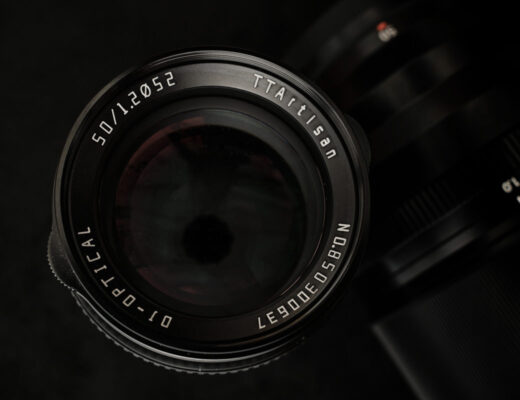I love technology as it pertains to functionality. As an example, the new iPhone X’s Face ID is definitely a technological accomplishment but the older Touch ID is more functional and practical. IBIS (In Body Image Stabilization) has become the holy grail ‘must have’ feature in photographic tech circles as it allows any adapted or legacy lens to be used without the need for OIS (Optical Image Stabilization). The new Fujifilm X-H1 has IBIS and has finally ‘caught up’ with the competition (Panasonic GH-5, Sony A6500, Sony A7 II, etc.), but how important is this single feature for your photography? As someone who shoots video, IBIS is an invaluable tool and the X-H1 does not disappoint in this department. However, I decided to test IBIS while in Hong Kong not only for video but for my stills as well. I took the Fujifilm X-E3 for comparison to see if I could really see a difference in my photography with this new feature.
To begin, the X-H1 is more than an X-T2 with IBIS. If you currently own an X-T2 and you’re thinking of upgrading, this is probably the one feature you’re considering. The other new features (check out my previous article) are great, but the primary feature you should be looking at is definitely the IBIS. However, the question we should be asking is this: will IBIS improve my current photography or will it only help expand or explore new photographic techniques? For me the answer was the latter, which isn’t a bad thing.
I’m not a patient photographer. I don’t like using tripods. Unless I’m shooting product shots or in a studio, I like to be free of any stabilization contraption. The most I’ll carry around is a monopod. However, IBIS allows me to shoot as if I have a tripod with me, without the burden of carrying one around or setting one up. It was… liberating. Shots that I would never attempt without some form of stabilization (for me it’s usually a wall, a pole, a mailbox, etc.) I was able to attempt with the X-H1’s IBIS. With up to 5.5 stops of stabilization, lenses such as the XF35mmF2 was fantastic at night and at super slow shutter speeds. I was easily hand holding 1/30th sec images with my stills, and I was able to get as low as 1/4 sec images pin sharp!
One thing to remember is that IBIS only stabilizes the camera, as if it was sitting on a tripod. If your subject shifts, no form of stabilization can fix that. I tested this effect at night with moving subjects and stationary surroundings. As you can see (opening and above image) the effect can be unpredictable but fun. You can play with various shutter speeds and get the right amount of blur. I prefer between 1/10th to 1/15th sec, but this also depends on your lens and distance to your subject. Moreover, if I didn’t have IBIS, I wouldn’t attempt these types of shots since many of these images were captured while standing on a crowded walkway, in the middle of the street, even on a moving bus! Because I had over five stops of stabilization, these types of images were possible.
Another test I did was in post-production. I wanted to compare the various film simulations, specifically comparing ETERNA with my two favourite profiles – CLASSIC CHROME and PRO Neg. Std. I used Fujifilm X RAW STUDIO to process all the images from RAW to JPEG. If you are not familiar with this workflow, basically you’re using the power of the X-H1’s X Processor Pro to process the RAW files on your computer. I can say with certainty that RAW conversion using the camera’s processor is superior in comparison to using ACR and LR converters, but with limited tools. I also noticed that if your exposure was way off (especially in the highlights) LR and PS is probably the better option. Below you can see the same image processed using ETERNA, PRO Neg. Std and CLASSIC CHROME. The most balanced image is the PRO Neg. Std, although for my tastes I prefer CLASSIC CHROME. Again, for video the ETERNA is perfect for a flat profile, but for stills I don’t find the images flattering, unless you’re looking for a very specific aesthetic.
My conclusion of IBIS on the X-H1? It’s fantastic. For a videographer it’s a dream to have stabilization natively on the Fujifilm X Series system or using adapted lenses. I was easily shooting hand held b-roll (60fps @ 1/60th sec shutter speed) with the XF50mmF2. For a stills photographer, I did not find that it improved my ‘normal’ photography, but it did change the way I saw shutter speeds and how I perceived motion with subjects. Without the need for a tripod, I could attempt to take certain types of images in situations where a tripod would be impossible to set up. Instead of improving my photography, the X-H1 allowed me to explore different types of photography that I would have never attempted with any other Fujifilm X Series camera body. The X-T2 is a very competent camera and I would not recommend the average stills photographer to upgrade if they think that by doing so their photography will see a dramatic improvement. However, if you want an extra trick up your sleeve, if you want to experiment with motion blur, or attempt low light hand held photography in situations where carrying around a tripod is impossible or inconvenient, then I say the X-H1 might be just what you’re looking for. Thanks for reading and happy shooting.


























